RATNAGIRI
Festivals & Fairs
Last updated on 22 July 2025. Help us improve the information on this page by clicking on suggest edits or writing to us.
Ratnagiri reflects Maharashtra’s vibrant cultural spirit through a range of fairs and festivals celebrated across its towns and villages. These occasions often bring together religious devotion, seasonal cycles, and community participation, shaping the district’s cultural identity. Prominent festivals like Ganesh Chaturthi, Diwali, Holi, Gudi Padwa, Ashadi Ekadashi, Akshay Tritiya, Navratri, Dussehra, Mahashivratri, Shivaji Jayanti, Makar Sankranti, Nag Panchami, and Vat Purnima are widely observed. However, the district is especially known for the Marleshwar Yatra, Shimga, and Velas turtle festival, among others, which highlight its local traditions and historical connections. Together, these celebrations offer insight into the district’s social fabric and collective rhythms of life.
Ganesh Chaturthi in Ratnagiri
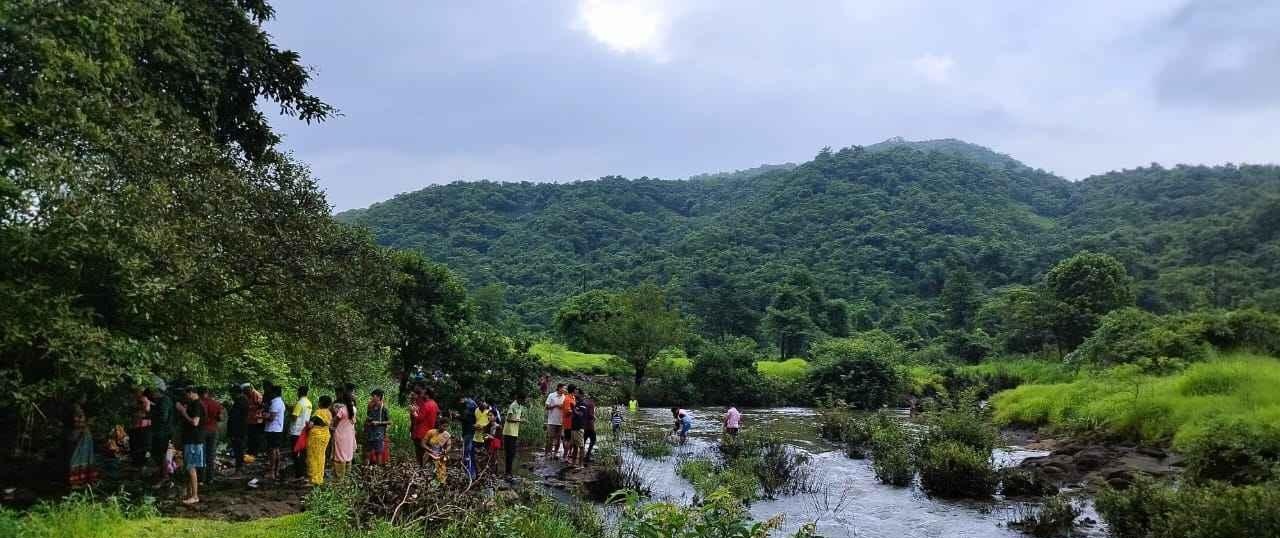
Ganesh Chaturthi is one of the most significant festivals celebrated across the Konkan region, marked by vibrant home-based traditions. Unlike the large public pandals commonly seen in urban areas, Ganesh Chaturthi in Konkan is mostly a household affair, where families bring home Ganpati murtis for 1.5, 3, 5, 7, or 10 days, depending on their family tradition and capacity.
A distinct ritual observed in many Konkan households during Ganesh Chaturthi is the Gauri Pujan, performed in homes where Ganpati is kept for more than five days. On this occasion, Gauri, believed to be Ganpati’s mother, is brought home. In Konkan, Gauri is typically seen as Gauri Parvati, Ganpati’s mother. In contrast, Pune traditions involve the worship of two Gauris, Jyeshtha and Kanishtha, considered Ganesh’s sisters. This difference reflects the regional variations in interpreting Ganesh’s family. The Gauri is crafted from a specific shrub, assembled on a wooden frame, and adorned with a saree, blouse, jewelry, and a painted head. Women from the household and neighborhood often gather for Gauri Jagran, singing and dancing through the night to perhaps symbolically keep Gauri awake.
Throughout the festival, families perform daily aartis, prepare and share homemade prasad, and often participate in communal visarjans. These practices not only reflect spiritual devotion but also reinforce the strong sense of community in Konkan’s villages and towns, where Ganesh Chaturthi is both intimate and collective in spirit.
Mahashivratri at Someshwar Mandir
Mahashivratri is celebrated with deep devotion and community participation at the Someshwar Mandir in Chirani village, located in Khed Taluka of Ratnagiri district. The Mandir is linked to an interesting local story, which continues to be an important part of local oral tradition. Long ago, a village farmer noticed his cow’s milk was missing each evening. Curious, he followed her and saw her releasing milk onto a stone shaped like a Shiv-Pindi. Seeing this as sacred, the villagers built the Someshwar Mandir at the spot, which still stands today.
On Mahashivratri, the Mandir becomes the center of village activity. People gather for an all-night celebration, with bhajans and kirtans echoing through the Mandir premises. A special Abhishek of the Shiv-Pindi with Bel leaves is performed, drawing more people from nearby villages. The atmosphere remains spiritually charged through the night and concludes the next morning with the distribution of Mahaprasad. In Ratnagiri district, this celebration at Someshwar Mandir stands out for its intimate setting and its deep connection to local belief and rural life.
Marleshwar Yatra
The Marleshwar Yatra is held every year on Makar Sankranti at the Marleshwar Cave Mandir near Sangameshwar in Ratnagiri district. Dedicated to Bhagwaan Shiv, the Mandir is nestled in the Western Ghats and is known for its natural cave setting and the presence of snakes around the shrine. The yatra marks the wedding of Marleshwar and Girija Devi and draws thousands of bhakts.
The two-day celebration includes traditional music, bhajans, kirtans, and folk plays like Dashavtar and Shivcharitra. A large fair is also organized, and Mahaprasad is served to all visitors. The yatra is a major annual religious and cultural gathering in the region.
Narali Purnima
In Ratnagiri, Narali Purnima is a significant festival for the coastal fishing communities, celebrated on the full moon day in the month of Shravan (July–August). In the days leading up to the festival, fishermen clean, repair, and decorate their boats: some even purchase new ones. On the day of the celebration, they dress in traditional attire and carry coconuts (Narali) as offerings. Prayers are offered to Bhagwaan Varuna, the god of the sea, seeking his blessings for safety and success during the upcoming fishing season. The day ends with a community feast featuring coconut rice (Narali Bhaat), depicting gratitude and togetherness.
Shimga
In Ratnagiri and the wider Konkan region, Holi is uniquely celebrated as Shimga, a festival deeply rooted in local traditions. While Holi is widely known across India, Shimga holds special cultural significance here as it marks the end of the harvest season and the arrival of spring. Celebrations typically last five to seven days from Phalgun Poornima, showcasing the renewal of life and the triumph of good over evil.
The first major day of Shimga in Ratnagiri is Dhulivandan, observed through the ritual of Holika Dahan. Bonfires are lit in village squares to signify the burning away of negativity and the victory of righteousness.
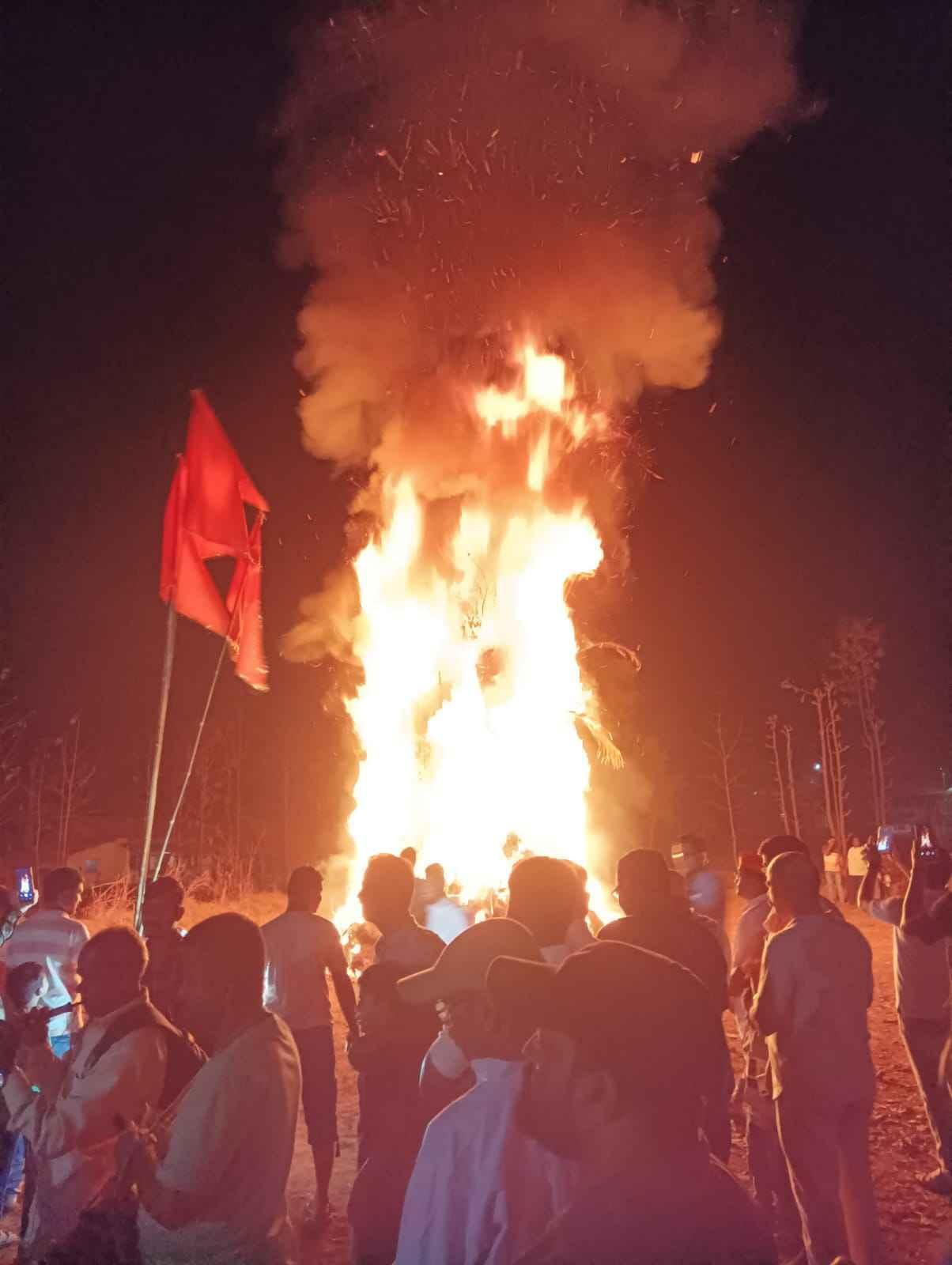
A unique feature of Shimga in Ratnagiri is the Palkhi Utsav, where decorated palanquins (palkhis) carrying local Gav (village) devis and devtas are taken out in grand processions. These processions are marked by the rhythmic beats of dhols, folk music, and dancing. A striking aspect of this ritual is the Bhet Sohala (meeting ceremony), when devis and devtas from neighbouring villages meet ceremoniously at the border between the two villages, welcomed with festive cheer and celebration.
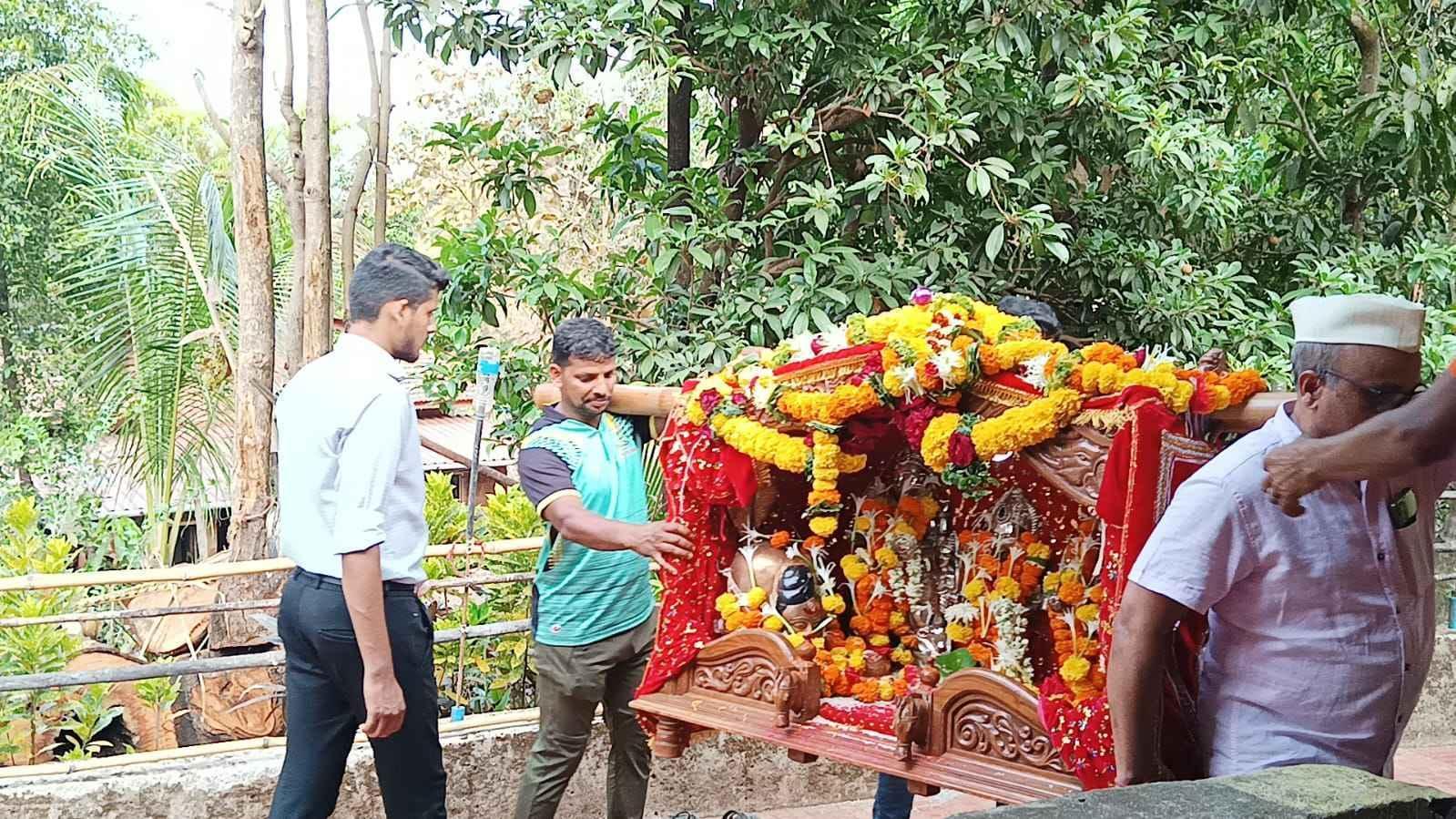
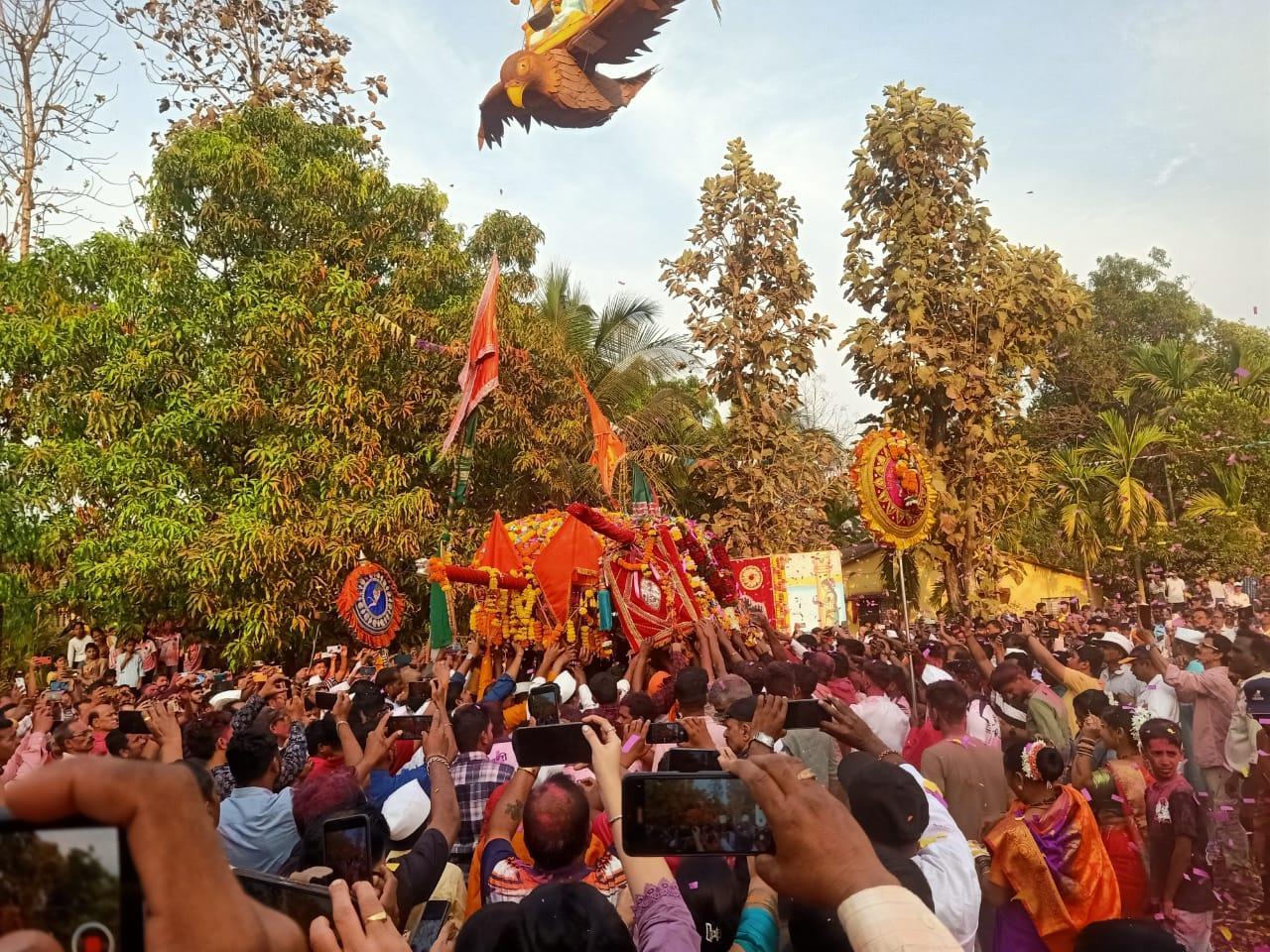
Five days after Dhulivandan, Rang Panchami marks the high point of color and play. In contrast to many parts of India where color is applied on Holi itself, in Ratnagiri, it is on Rang Panchami that people smear each other with vibrant hues. Children, youth, and elders all take part in the joyful throwing of gulal and water, making this day the most spirited part of Shimga.
Together, the rituals and customs of Shimga reflect the strong community bonds, local beliefs, and festive spirit that make Holi in Ratnagiri distinct from celebrations elsewhere.
Velas Turtle Festival
![People celebrate as the newly hatched turtles make their way to the ocean.[1]](/media/culture/images/maharashtra/ratnagiri/festivals-fairs/people-celebrate-as-the-newly-hatch_DdZSz1P.jpg)
Every year, the Velas Turtle Festival is held in Velas, a small coastal village in Ratnagiri district. The festival is organized by the villagers, who work to conserve and protect the endangered Olive Ridley sea turtles. The festival is a way to create awareness about the importance of preserving these turtles and their habitat. During the festival, baby Olive Ridley turtles are released into the sea, marking the end of their hatching season. A similar festival takes place in Anjarle as well.
Yakub Baba Dargah Urs
The annual Urs at Yakub Baba Dargah in Kelshi village, Ratnagiri, is a significant religious and cultural event celebrated on December 6. The dargah commemorates Yakub Baba, a revered Sufi figure believed to have arrived from Sindh during Chhatrapati Shivaji Maharaj’s expedition to Dabhol. Local tradition holds that Shivaji Maharaj began construction of the shrine, which was later completed by Sambhaji Maharaj.
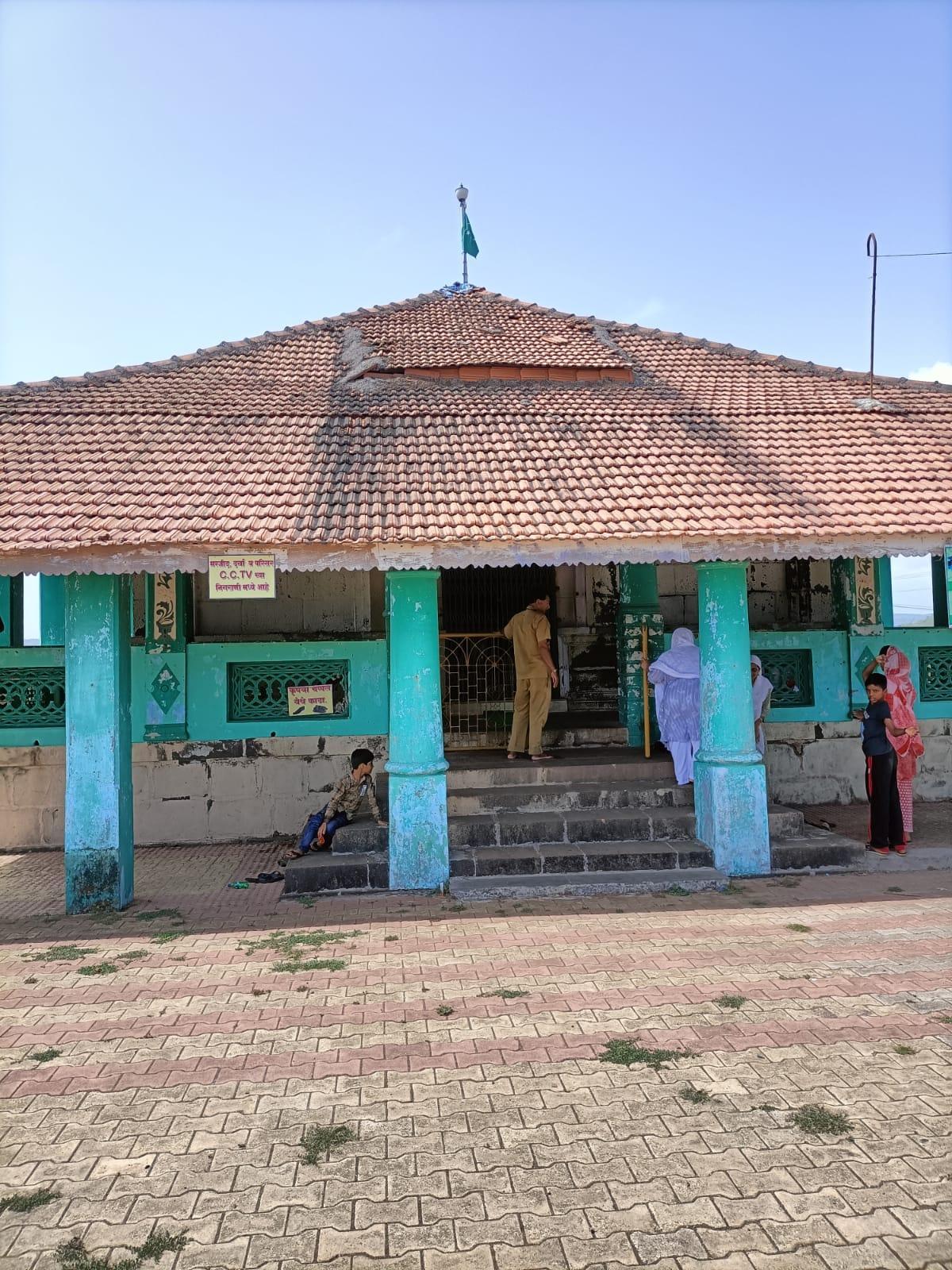
The Urs begins with the ceremonial offering of a chadar at the nearby dargah of Himmat Khan, Yakub Baba’s companion, before the main rituals commence. People from nearby villages and towns gather in large numbers to offer prayers, participate in processions, and seek blessings. The celebration includes devotional music, community meals, and a spirit of shared reverence across communities.
The Urs of Yakub Baba continues to be an important occasion for both faith and fellowship in the coastal region of Ratnagiri.
Last updated on 22 July 2025. Help us improve the information on this page by clicking on suggest edits or writing to us.